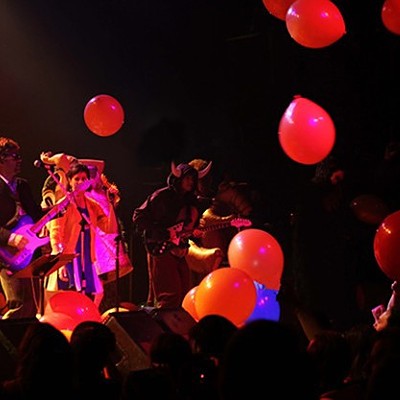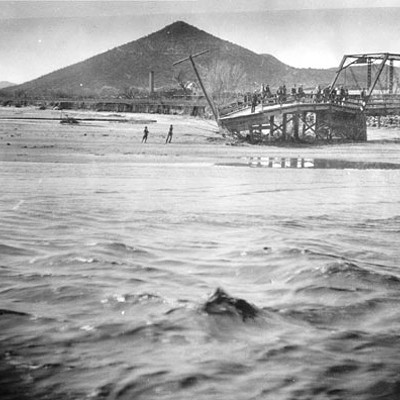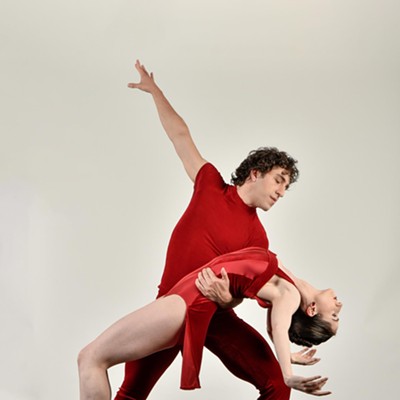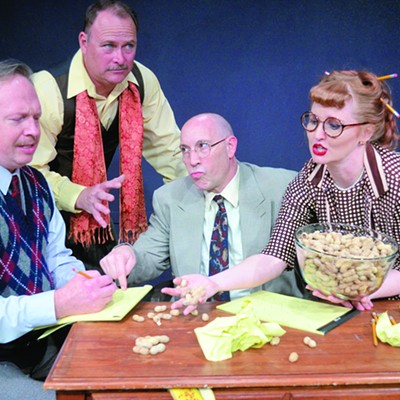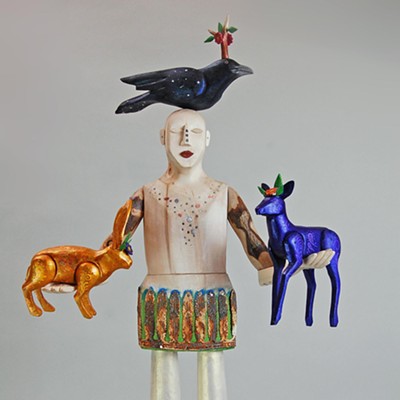Feelin' Blue
Blues and Heritage Festival
11 a.m. to 7 p.m., Sunday, Oct. 20
Rillito Park Race Track4502 N. First Ave.
319-9966; azblues.org;
If you're getting more and more apathetic about the monotonous, amorphous slop that is Top 40 mainstream music, listen up because October is about to get interesting. Ever seen a man play the guitar so long that his fingers bleed? That's the blues, baby. And it's blues season in Tucson.
On Sunday, the Southern Arizona Blues Heritage Foundation is hosting its 27th annual Blues and Heritage Festival—a day filled with food, good people and, of course, blues music. A staple of the Tucson music scene, the festival is primed to showcase not only the big names, but also local talent.
"Tucson has such amazing musical talent; it's something we take for granted," said Susan Holden, marketing director for the festival. "We are the music capital of the Southwest." And festival organizers seem hungry to prove that. The festival features seven acts, including Roy Rogers (who has played alongside the likes of John Lee Hooker and Carlos Santana, according to Holden) and his band, the Delta Rhythm Kings; Australian singer-guitarist Kara Grainger; and local heroes the Coolers, the Ed de Lucia Blues Band, Anna Warr and Giant Blue, Chicha Dust and the Cholla High School Blues Band.
Admission is $10 and tickets are available at azblues.org. And if you're 18 or younger, you get in free. Stay an hour, stay for the afternoon, or stay all day and bask in the glory of the blues.
—I.G.
Lest We Forget
Grand Opening of the Holocaust History Center
1 to 5 p.m., Sunday, Oct. 20
Jewish History Museum564 S. Stone Ave.
670-9073; jewishhistorymuseum.org;
Tucson will soon be home to the Holocaust History Center, the state's first museum exhibit dedicated entirely to the Holocaust.
The center, a project by Tucson's Jewish History Museum and the Jewish Federation of Southern Arizona, is dedicated to telling the stories of more than 200 Holocaust survivors who came to call Southern Arizona home after escaping the horrors of Nazi oppression.
"The survivors who lived here kept everything after they came to the United States," said Eileen Warshaw, executive director of the Jewish History Museum. "Documents and papers and manifests of the ships they came on, and some memorabilia from the old country. And so we realized that we had this (historical) treasure trove."
Rather than focus on the pain, suffering and death during the Holocaust, the museum has chosen to honor the lives of survivors as they moved forward.
"We will have photos from the Holocaust era, of course, because you have to set the stage," Warshaw said. "But we'll (also) have photographs and stories of the survivors who lived here. And through that, we hope that we will inspire the next generation to remember."
The grand opening of the exhibit will include talks by Holocaust survivors, many of whom are featured in the museum's exhibits. From 2 to 4 p.m., visitors are invited to ask the survivors about their lives, their journeys to Tucson and other recollections.
The grand opening is free.
—I.G.
Appreciation and Appetites
Santa Cruz Heritage Dinner
5:30 to 8:30 p.m., Sunday, Oct. 20
Steinfeld Warehouse101 W. Sixth St.
882-4405;SantaCruzHeritage.org
The Santa Cruz Valley Heritage Alliance celebrates the rich culture of Southern Arizona: The landscape, from the deserts to the sky islands; the history, from the Native American settlers through the Cold War's Titan Missile Museum; the local foodshed, from the ranches to the wineries; and so much more that makes up the traditions of the place we call home.
The nonprofit doesn't just promote tourism in the region, whether it's guiding birdwatchers along the San Pedro River or introducing visitors to the challenges faced by people living on the northern frontier of New Spain. It's also the driving force pushing for Congress to designate a large chunk of Southern Arizona as a National Heritage Area, defined by the National Park Service as a place "where natural, cultural, historic and recreational resources combine to form cohesive, nationally distinctive landscapes arising from patterns of past and present human activities shaped by geographies."
This Sunday, Oct. 20, the group will enter the rustic walls of downtown's Steinfeld Warehouse to host the third annual Santa Cruz Heritage Dinner, a fundraiser that will feature heritage foods prepared by chef Ryan Clark of Lodge on the Desert, who has captured Tucson's Iron Chef crown on three occasions. He'll get help from the folks from Little Café Poca Cosa, the Desert Rain Café and—for dessert—Isabella's Ice Cream.
But it's not just a locavore's feast. There's also wine, beer and whiskey from local vineyards, breweries and distilleries; a silent auction featuring some surprises from the likes of Etherton Gallery, the Rialto Theatre, Club Congress, Green Valley Pecan Co. and many, many others; and live music by the inimitable Salvador Duran. Tickets are $75 in advance, available online at SantaCruzHeritage.org.
—J.N.
New Look at an Old Nemesis
Tumamoc Hill Lecture Series
6 to 7:30 p.m., Tuesday, Oct. 22
Off West Anklam Road, just north of North Silverbell Road
629-9455; tumamoc.org
You may think mistletoe is just a good excuse to get a smooch out of your sweetheart. But Noah Whiteman knows better.
Whiteman, an assistant professor in UA's department of ecology and evolutionary biology, will expose mistletoe's true colors during a talk that is part of the monthly Tumamoc Hill Lecture Series. Whiteman will discuss how the parasitic plant has taken over many of the Tucson area's mesquite trees, and what the consequences of this massive infestation are for both mesquite trees and wildlife. The UA lecture series is in its fifth year.
"Tumamoc is an incredibly varied place," says Michael Rosenzweig, director of Tumamoc and a professor of ecology and evolutionary biology at UA. "We have our fingers in environmental science, archaeology, ancient culture, conservation biology ... and in addition to all of that we have thousands upon thousands of people who walk that hill every week."
Tumamoc Hill is a national historical landmark and the longest-running ecological restoration project in the world. Pioneering plant ecologists began investigations on the hill west of downtown in 1903, and scientists continue to study Tumamoc to this day.
For the lectures, "We try to bring people in who relate to some aspect of what goes on at Tumamoc and let them illuminate that aspect," Rosenzweig says. The series "is focused on Tumamoc Hill but in a very broad sense."
While this month's talk is focused on Tumamoc's vegetation, the November lecture, to be given by Rosenzweig, will highlight both flora and fauna, and how Tucsonans can help in efforts to conserve native species.
The lectures are free. However, if you plan to attend, you're asked to reserve a spot on the shuttle that will take visitors to the library at the top of the hill where the lecture will be held. To make a reservation, email cynthiaanson@email.arizona.edu.
—T.T.






